Out-of-home is no longer a pure awareness play. When billboards, transit wraps, street furniture, and programmatic DOOH are planned alongside digital, they can create measurable demand—and prove it. This guide explains a privacy-safe approach to connect OOH exposure to conversions, using geo-retargeting, clean tracking, and simple lift analysis that leadership can trust.
Define success and instrument for proof
Start with a single, unambiguous conversion goal (demo request, quote, purchase) and a clean way to attribute progress toward it.
- Tracking & taxonomy: Implement GA4 events and ad pixels with consistent naming. Standardise UTMs (source/medium/campaign/ad) and document them.
- OOH-specific call-outs: Use scannable QR codes, short vanity URLs (e.g., brand.co/city), and promo codes unique to the OOH flight. Point them to a fast, mobile-first landing page that mirrors the billboard message.
- Consent & compliance: Honour Consent Mode and regional rules; avoid device-level identifiers unless explicitly consented and supported by partners.
Clear instrumentation makes later analysis credible and keeps “brand halo” claims out of guesswork.
Plan placements around real audience movement
Where people actually travel matters more than any single “premium” site.
- Audience routing: Map commuter flows, event hubs, retail clusters, and airport corridors that align with buyer personas.
- Context & timing: Match offers and creative to dayparts (work commute vs. weekend shopping), seasons, and local events.
- Coverage vs. frequency: Balance digital screens (flexible, rapid flights) with static units (high dwell, repeated exposures) to reach frequency without overspend.
The result should be a small set of high-likelihood zones that can be measured against control geographies.
Build privacy-safe geo-retargeting
Use location to bridge offline exposure to online engagement—without invasive tracking.
- Geo audiences: Create platform audiences keyed to tight radii around OOH sites (e.g., 0.5–1 km), where supported. Run sequential messaging to those zones during the flight window.
- Search & social follow-through: Increase bids on brand and category keywords within the exposed regions, and run retargeting for visitors who arrive via OOH-tagged UTMs or vanity paths.
- Programmatic DOOH integrations (where available): Some partners can pass exposure signals to enable privacy-compliant retargeting pools; validate consent and documentation before activating.
Geo-retargeting should reinforce the billboard message with the same hook, visual, and offer to reduce cognitive load and boost recall.
Tie exposure to outcomes with lift analysis
Because most OOH journeys won’t scan a code, use incrementality methods to quantify impact.
- Exposed vs. control geos: Pick look-alike areas with similar baseline traffic to act as controls.
- Pre/post windows: Compare KPI trends two to four weeks before the flight and during/after the flight.
- Metrics that move:
- Branded search volume and direct sessions from exposed geos
- Landing page visits with OOH UTMs or vanity URLs
- Leads, signups, and assisted conversions in GA4/CRM tagged to exposed geos
- Difference-in-differences: Measure the change in exposed areas minus the change in control areas. This shows the incremental effect attributable to OOH, independent of seasonality or macro shifts.
- Confidence checks: Look for correlated movement across multiple signals (e.g., branded search ↑, direct traffic ↑, assisted conversions ↑) to avoid over-attributing to one noisy metric.
A simple, well-documented lift study beats a complex model no one believes.
Creative that closes the loop
OOH creative should be built for distance and speed—and hand users a clear next step.
- One idea, one line: A single benefit or problem statement with strong brand assets.
- Short paths: Vanity URL with a 2–3 word slug and a QR that lands on the exact promise.
- Consistency: Use the same headline, colour, and visual in digital retargeting and the landing page hero.
- Proof snippets: Where formats allow, include a compact trust cue (award, rating, or simple stat) to justify the click later.
Clarity reduces friction and improves scan, recall, and downstream conversion rates.
Dashboard and reporting that leadership trusts
Make the readout boring—in a good way.
- Single view: A dashboard that breaks down exposed vs. control by region and shows visits, branded search, leads, and assisted conversions.
- Attribution sanity: Reconcile platform-reported conversions with GA4 and CRM. Investigate large gaps; annotate changes (new landing page, bid shifts, creative swap).
- Unit economics: Translate lift into incremental leads, revenue influence, CAC/ROAS. Add a short narrative: what worked, what underperformed, and what to test next.
The goal is a repeatable report that can be read in minutes and defended in meetings.
A 30-day rollout plan
Days 1–7: Foundation
- Lock conversion definitions, UTMs, and GA4 events.
- Finalise geo selection and partner inventory; secure rates and dates.
- Produce creative with matching landing experience, QR, and vanity URL.
Days 8–14: Soft launch
- Activate first screens; QA flighting and proof-of-posting.
- Turn on geo audiences, brand-keyword bid adjustments, and retargeting.
- Validate data flow; fix any broken events or slow pages.
Days 15–30: Scale and measure
- Expand inventory where early signals are strong.
- Run matched-market lift analysis with weekly cuts.
- Shift budget to the best zones/creatives; prepare the final readout.
Deliverables at day 30: instrumented landing, live geo-retargeting, exposed vs. control dashboard, and a post-campaign report with clear next steps.
Common pitfalls to avoid
- No control geos: Without a credible control, “lift” is guesswork.
- Inconsistent creative: Mixed messages across OOH, landing, and retargeting dilute recall.
- Slow mobile pages: Lost scans and bounces waste the media buy.
- Messy UTMs: Incomparable campaigns make analysis impossible.
- Over-promising: Use privacy-safe methods; document what is and isn’t being tracked.
Bringing OOH and digital into one growth system
When OOH planning, geo-retargeting, and lift analysis are aligned, billboards do more than build awareness—they create measurable demand that feeds search, social, and CRM. The process is repeatable, compliant, and scale-ready: plan sites around audience movement, keep creative and landing pages consistent, instrument cleanly, and prove incrementality with exposed vs. control analysis.
Learn more about integrated performance and OOH within a single strategy on the Services page, read the story behind the approach on About, or explore additional resources from the Homepage. For briefs and collaborations, visit Contact Us.

Fusce condimentum enim vestibulum libero gravida, ut accumsan quam bibendum. Curabitur gravida est sit amet cursus.
condimentum enim vestibulum libero gravida, ut accumsan quam bibendum. Curabitur gravida est sit amet cursus.